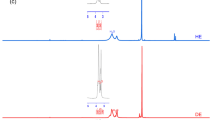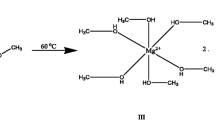Abstract
Magnesium batteries are promising post-lithium storms for their low cost and high energy density. Engineering novel cathodic materials compensate for the charge imbalance due to the introduction of the bivalent magnesium cation in the framework of the cathode, which is one of the key solutions for realizing a practical Mg battery. Herein, crystal engineering of WS2 using the Al doping strategy is conducted to regulate magnesium storage and electrochemical reaction kinetics of WS2 cathodes. Tungsten disulfide (WS2) and Al-doped WS2 (WS2@Alx, x = 0, 2, and 4 wt.%) are prepared by a one-step hydrothermal technique and used as a cathode material for magnesium batteries. We explore the Mg2+ insertion/extraction process on the WS2@Alx in the presence of a halogen-free electrolyte (HFE) based on 0.69 M Mg(NO3)2·6H2O dissolved in acetonitrile (ACN) to tetra ethylene glycol dimethyl ether (G4) (∼2:1). The Mg/WS2 full battery containing Al delivered a higher initial discharge capacity than the Al-free cell. Introducing an anode/electrolyte polymer interface inhibits the passivation of Mg anode via insulation between the liquid electrolyte and Mg anode. This study provides an effective method to design a practical Mg cathode and a new understanding of crystal engineering of WS2 by Al doping. This may help construct high-performance cathodes for Mg battery applications.










Similar content being viewed by others
References
Sheha E, Farrag M, Fan S, Kamar E, Sa N (2022) A simple Cl–-free electrolyte based on magnesium nitrate for magnesium–sulfur battery applications. ACS Appl Energy Mater 5:2260–2269
Wang D, Du X, Chen G, Song F, Du J, Zhao J et al (2023) Cathode Electrolyte Interphase (CEI) Endows Mo6S8 with fast interfacial magnesium-ion transfer kinetics. Angew Chem 135:e202217709
Li Y, Xu D, Zhang D, Wei Y, Qu D, Guo Y (2019) Study on MXene-supported layered TiS2 as cathode materials for magnesium batteries. Int J Electrochem Sci 14:11102–11109
Zhang R, Bao J, Pan Y, Sun C-F (2019) Highly reversible potassium-ion intercalation in tungsten disulfide. Chem Sci 10:2604–2612
Latha M, Rani JV (2019) WS2/graphene composite as cathode for rechargeable aluminum-dual ion battery. J Electrochem Soc 167:070501
Latha M, Biswas S, Rani JV (2020) Application of WS 2-G composite as cathode for rechargeable magnesium batteries. Ionics 26:3395–3404
Zhao X, Xu F (2023) An Amorphous molybdenum polysulfide cathode for rechargeable magnesium batteries. ChemPhysChem 24(16):e202300333
Debela TT, Lim YR, Seo HW, Kwon IS, Kwak IH, Park J et al (2018) Two-dimensional WS2@ nitrogen-doped graphite for high-performance lithium ion batteries: experiments and molecular dynamics simulations. ACS Appl Mater Interfaces 10:37928–37936
Zhang T, Fujisawa K, Zhang F, Liu M, Lucking MC, Gontijo RN et al (2020) Universal in situ substitutional doping of transition metal dichalcogenides by liquid-phase precursor-assisted synthesis. ACS Nano 14:4326–4335
Pham VP, Yeom GY (2016) Recent advances in doping of molybdenum disulfide: industrial applications and future prospects. Adv Mater 28:9024–9059
Zhang K, Bersch BM, Joshi J, Addou R, Cormier CR, Zhang C et al (2018) Tuning the electronic and photonic properties of monolayer MoS2 via in situ rhenium substitutional doping. Adv Func Mater 28:1706950
Bulusheva LG, Semushkina GI, Fedorenko AD (2023) Heteroatom-doped molybdenum disulfide nanomaterials for gas sensors, alkali metal-ion batteries and supercapacitors. Nanomaterials 13:2182
Zhaoyan L, Ouyang Y, Zhang H, Xiao M, Ge J, Jiang Z et al (2018) Chemically activating MoS2 via spontaneous atomic palladium interfacial doping towards efficient hydrogen evolution. Nat Commun 9:2120
Gao J, Ma Y, Li J, Fan J, Shi P, Xu Q et al (2018) Free-standing WS 2-MWCNTs hybrid paper integrated with polyaniline for high-performance flexible supercapacitor. J Nanopart Res 20:1–12
Crisci M, Boll F, Merola L, Pflug JJ, Liu Z, Gallego J et al (2022) Nanostructured 2D WS2@ PANI nanohybrids for electrochemical energy storage. Front Chem 10:1000910
Gao J, Ma Y, Li J, Fan J, Shi P, Xu Q et al (2018) Free-standing WS2-MWCNTs hybrid paper integrated with polyaniline for high-performance flexible supercapacitor. J Nanopart Res 20:298
Poudel MB, Ojha GP, Kim HJ (2022) Manganese-doped tungsten disulfide microcones as binder-free electrode for high performance asymmetric supercapacitor. J Energy Storage 47:103674
Zhang F, Zheng B, Sebastian A, Olson DH, Liu M, Fujisawa K et al (2020) Monolayer vanadium-doped tungsten disulfide: a room-temperature dilute magnetic semiconductor. Adv Sci 7:2001174
Gao X, Fu Y, Jiang D, Wang D, Yang J, Weng L et al (2018) Structural, mechanical, and tribological properties of WS 2-Al nanocomposite film for space application. Tribol Lett 66:1–12
Luo M, Yin C (2018) Electronic and magnetic properties of Al-doped WS2 monolayer under strain. Ferroelectrics 531:114–121
Li N, Feng L-P, Su J, Zeng W, Liu Z-T (2016) Optical and electrical properties of Al: WS 2 films prepared by atomic layer deposition and vulcanization. RSC Adv 6:64879–84
Farrag M, Refai H, Sheha E (2023) The role of adding NaF to the electrolyte in constructing a stable anode/electrolyte interphase for magnesium battery applications. J Solid State Electrochem 27:379–389
Sheha E, Fan S, Farrag M, El-Dek E, Moselhy MA, Sulatt D et al (2023) Life aging effect as a conditioning process that regulates the performance of the halogen-free Mg electrolyte. Langmuir 39:16637–16647
Refai H, Yacout N, Farrag M, Ibrahim S, Kebede MA, Salman F et al (2023) Succinonitrile as electrolyte-additive with modified separator and microwave-assisted synthesis of sulfur nanoparticles cathode for magnesium battery applications. J Energy Storage 70:107954
Balzer R, Drago V, Schreiner WH, Probst LF (2014) Synthesis and structure-activity relationship of a WO3 catalyst for the total oxidation of BTX. J Braz Chem Soc 25:2026–2031
Yang F, Wang D, Zhao Y, Tsui K-L, Bae SJ (2018) A study of the relationship between coulombic efficiency and capacity degradation of commercial lithium-ion batteries. Energy 145:486–495
Hasani A, Nguyen TP, Tekalgne M, Van Le Q, Choi KS, Lee TH et al (2018) The role of metal dopants in WS2 nanoflowers in enhancing the hydrogen evolution reaction. Appl Catal A 567:73–79
Meilinda H, Bahti HH, Anggraeni A, Effendi S (2021) Preparation of liquid emulsion membranes for separation of gadolinium (III) from samarium (III) with tributyl phosphate or di-(2-Ethylhexyl) phosphoric acid extraction based on emulsion stability. Chem Sci J12:1–8
Vaziri HS, Shokuhfar A, Afghahi SSS (2020) Synthesis of WS2/CNT hybrid nanoparticles for fabrication of hybrid aluminum matrix nanocomposite. Mater Res Express 7:025034
Zhong H, Sang L, Ding F, Song J, Mai Y (2018) Conformation of lithium-aluminium alloy interphase-layer on lithium metal anode used for solid state batteries. Electrochim Acta 277:268–275
Atrak K, Ramazani A, Taghavi FS (2018) Green synthesis of amorphous and gamma aluminum oxide nanoparticles by tragacanth gel and comparison of their photocatalytic activity for the degradation of organic dyes. J Mater Sci Mater Electron 29:8347–8353
Williamson G, Hall W (1953) X-ray line broadening from filed aluminium and wolfram. Acta Metall 1:22–31
Hasan R, Scott J (2020) Extending randles’s battery model to predict impedance, charge–voltage, and runtime characteristics. IEEE Access 8:85321–85328
Ben Ishay R, Harel Y, Lavi R, Lellouche J-P (2016) Multiple functionalization of tungsten disulfide inorganic nanotubes by covalently grafted conductive polythiophenes. RSC Adv 6:89585–89598
Hasan R, Scott J (2020) Extending randles’s battery model to predict impedance, charge–voltage, and runtime characteristics. IEEE Access 8:85321–85328
Alahmadi M, Farrag M, El-Dok E, Moselhy MA, Sheha E (2023) Evaluation of the performance of VSe2 cathode in halogen-free electrolyte for magnesium battery applications. Mater Lett 341:134300
Major GH, Fairley N, Sherwood P, Linford MR, Terry J, Fernandez V, Artyushkova K (2020) Practical guide for curve fitting in X-ray photoelectron spectroscopy. J Vac Sci Technol A 38(6)
Sheha EM, Farrag M, Refai HS, El-Desoky MM, Abdel-Hady E (2023) Positron annihilation spectroscopy as a diagnostic tool for probing the first-cycle defect evolution in magnesium–sulfur battery electrodes. Phys Status Solidi A 220:2200661
Ma Q, Yang Z, Zhang L, Lin R, Wang X (2019) Generation of hydrogen sulfide during the thermal enhanced oil recovery process under superheated steam conditions. RSC Adv 9:33990–33996
Mao X, Xu Y, Xue Q, Wang W, Gao D (2013) Ferromagnetism in exfoliated tungsten disulfide nanosheets. Nanoscale Res Lett 8:1–6
Gao X, Fu Y, Jiang D, Wang D, Yang J, Weng L et al (2018) Structural, mechanical, and tribological properties of WS2-Al nanocomposite film for space application. Tribol Lett 66:1–12
Liu K, Luo L, Zhou W, Yang J, Xiao H, Hong Z et al (2013) Study of behaviors of aluminum overlayers deposited on uranium via AES, EELS, and XPS. Appl Surf Sci 270:184–189
Miao X, Yang J, Pan W, Yuan H, Nuli Y, Hirano S-I (2016) Graphite fluoride as a cathode material for primary magnesium batteries with high energy density. Electrochimica Acta 210:704–11
Parambath VB, Zhao-Karger Z, Diemant T, Jäckle M, Li Z, Scherer T et al (2020) Investigation on the formation of Mg metal anode/electrolyte interfaces in Mg/S batteries with electrolyte additives. Journal of Materials Chemistry A 8:22998–23010
Zhang Y, Tao D, Xu F, Li T (2022) A low-cost and high-performance rechargeable magnesium battery based on povidone iodine cathode. Chem Eng J 427:131592
Zuo C, Tang W, Lan B, Xiong F, Tang H, Dong S et al (2021) Unexpected discovery of magnesium-vanadium spinel oxide containing extractable Mg2+ as a high-capacity cathode material for magnesium ion batteries. Chem Eng J 405:127005
Zhuang Y, Wu D, Wang F, Xu Y, Zeng J, Zhao J (2022) Tailoring a hybrid functional layer for Mg metal anodes in conventional electrolytes with a low overpotential. ACS Appl Mater Interfaces 14:47605–47615
Author information
Authors and Affiliations
Corresponding authors
Additional information
Publisher's Note
Springer Nature remains neutral with regard to jurisdictional claims in published maps and institutional affiliations.
Supplementary Information
Below is the link to the electronic supplementary material.
Rights and permissions
Springer Nature or its licensor (e.g. a society or other partner) holds exclusive rights to this article under a publishing agreement with the author(s) or other rightsholder(s); author self-archiving of the accepted manuscript version of this article is solely governed by the terms of such publishing agreement and applicable law.
About this article
Cite this article
Alahmadi, M., El-Dek, E., Moselhy, M.A. et al. Tungsten disulfide coupling with halogen-free electrolyte for magnesium battery applications. J Solid State Electrochem (2024). https://doi.org/10.1007/s10008-024-05872-z
Received:
Revised:
Accepted:
Published:
DOI: https://doi.org/10.1007/s10008-024-05872-z




